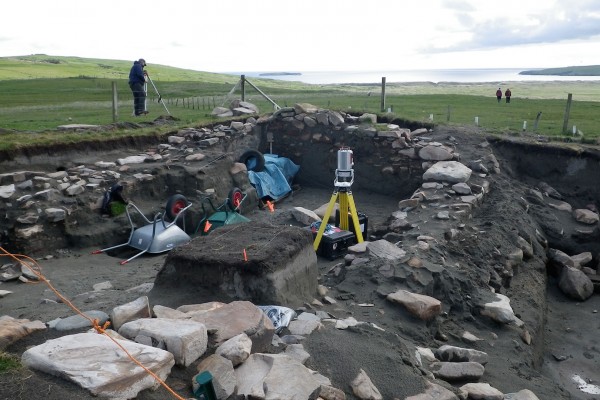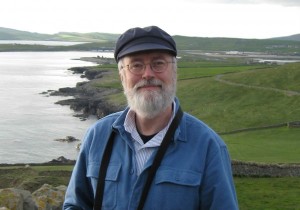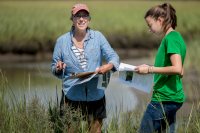
Bates-directed climate project in Shetland Islands wins environmental award
A Bates-directed archeological project in the Shetland Islands has won an environmental award from the Shetland government and environmental organizations.

In the Shetland Islands, a Bates-directed archaeological dig, funded by the National Science Foundation, involves geologists, anthropologists, historians and biologists who are discovering the fate of a township named Broo that was buried in sand during the 17th-century Little Ice Age.
Presented Nov. 14, the award recognizes achievements in sustainability, innovation and best practice by the Shetland Islands Climate and Settlement Project, a collaborative research effort led by Gerald Bigelow, a lecturer in archeology at Bates, who attended the award ceremony hosted by the Shetland Amenity Trust.
The award praised the climate and settlement project in several areas:
- fostering ties with elementary schools in both Maine and the Shetland Islands;
- offering site visits for local schoolchildren;
- creating research collaborations with local archivists and community groups;
- and sharing project findings through public talks, radio interviews and conference presentations.
The multi-institution project seeks to understand the historical relationships among climate, the environment and human activity in the Shetland Islands. It won a $619,000 National Science Foundation award in 2010.

Gerald Bigelow is a lecturer in archeology and the principal investigator for a NSF grant of $619,000 that funds the Shetland Islands Climate and Settlement Project.
The project’s field research looks specifically at Broo, a township whose economy and landscape were devastated as the Little Ice Age, generally considered to have lasted from the 1300s to the 1800s, reached its coldest period.
“The 17th century was one of the coldest periods in the Little Ice Age,” Bigelow says. “The 1690s, when our site was last occupied, is thought to have been the coldest decade in the last 1,000 years.”
Ultimately, the township became buried in sand.
Studying ways people adapted to past environmental change is relevant to current and future global change, Bigelow says, and informs future management strategies for northern coastal environments.
The project includes researchers who represent four U.K. and four U.S. colleges and universities.
The U.S. institutions are Bates, the University of Maine, the University of Southern Maine and City University of New York.
The U.K. institutions are the University of Stirling, University of Edinburgh, University of Bradford and the Scottish Universities Environmental Research Centre, closely allied with the University of Glasgow.




